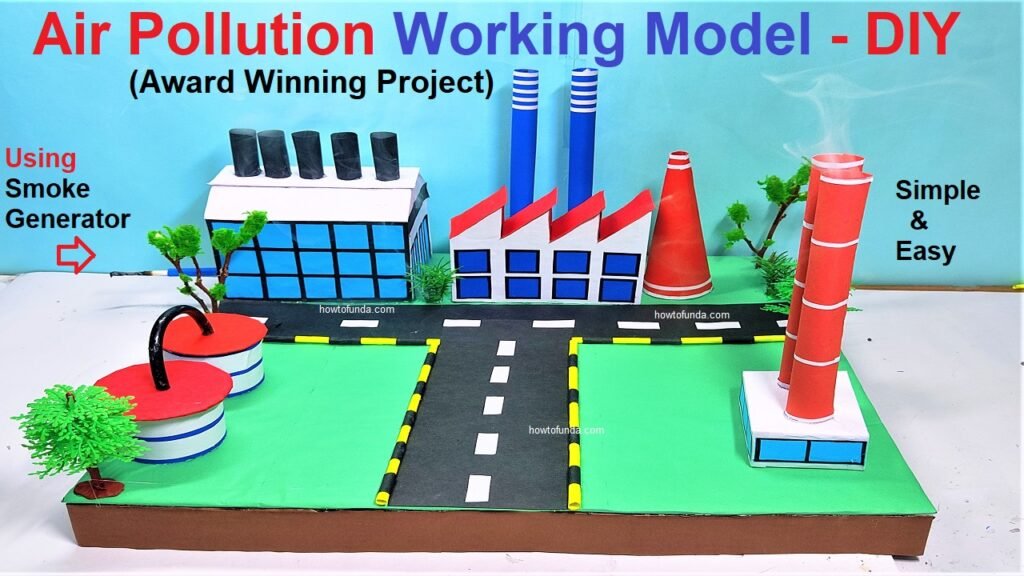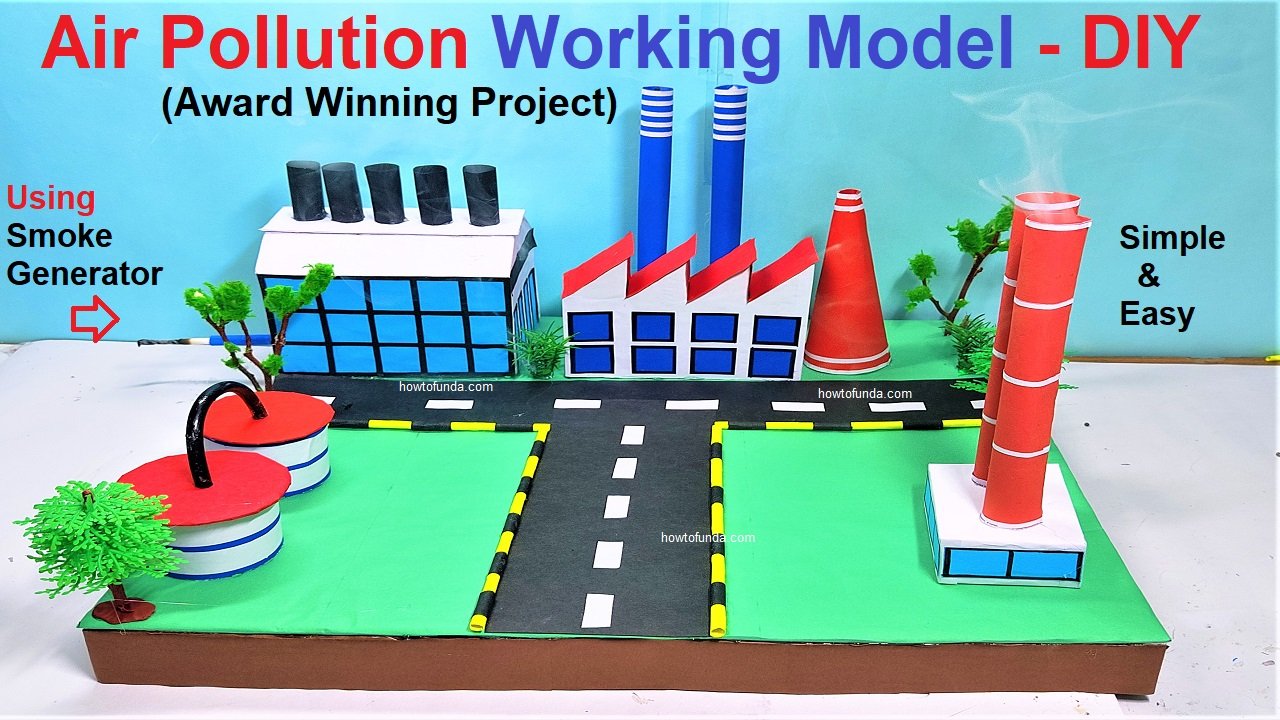Explaining an air pollution working model at a science exhibition or fair involves breaking down complex concepts into easy-to-understand segments.

Here’s a structured approach:
1. Introduction
- Hook: Start with an eye-catching fact or question, such as, “Did you know that air pollution causes over 7 million premature deaths each year?”
- Purpose: Briefly explain why understanding air pollution is crucial, highlighting its impact on health and the environment.
2. Overview of Air Pollution
- Definition: “Air pollution is the presence of harmful substances in the air that can cause health problems and environmental damage.”
- Types: Explain the primary types of air pollutants: particulate matter (PM), nitrogen oxides (NOx), sulfur dioxide (SO2), carbon monoxide (CO), volatile organic compounds (VOCs), and ozone (O3).
3. Components of the Model
Describe the different parts of your air pollution working model. This might include:
- Pollution Sources: Factories, vehicles, burning waste, etc.
- Air Quality Sensors: Devices that measure the levels of different pollutants.
- Filters/Scrubbers: Mechanisms that show how pollutants can be removed from the air.
- Display Panel: Shows real-time data or simulation results.
4. Functioning of the Air pollution working Model
Pollution Generation
- Explain: “This part of the air pollution working model simulates how pollutants are released into the air from various sources like factories and cars.”
- Show: Demonstrate the sources of pollution in your air pollution working model.
Pollution Detection
- Explain: “Air quality sensors measure the concentration of pollutants in the air.”
- Show: Point to the sensors and explain how they work. If your model includes a digital display, show the readings.
Pollution Control
- Explain: “Filters and scrubbers can remove harmful substances from the air.”
- Show: Demonstrate how these devices work in your air pollution working model. For example, use a simple filter to show how it captures particles.
5. Interactive Demonstration
- Live Demonstration: Activate your air pollution working model to show how pollution is generated, detected, and controlled. Explain each step as it happens.
- Hands-On Activity: Allow visitors to interact with the air pollution working model. For instance, they could turn on a fan representing wind to see how it disperses pollutants or use a filter to clean polluted air.
6. Educational Content
- Health Effects: Briefly explain how different air pollutants affect human health (e.g., respiratory issues from particulate matter, lung damage from ozone).
- Environmental Impact: Discuss how air pollutants like sulfur dioxide and nitrogen oxides contribute to acid rain and how carbon dioxide contributes to global warming.
7. Q&A Session
- Engage: Invite questions from the audience. Be ready to answer common questions such as, “How can we reduce air pollution in our daily lives?” or “What are the most dangerous pollutants?”
8. Conclusion
- Summary: Recap the main points: the sources and types of air pollution, how it’s detected, and how it can be controlled.
- Call to Action: Encourage visitors to think about ways they can reduce air pollution, such as using public transport, recycling, and supporting clean energy initiatives.

